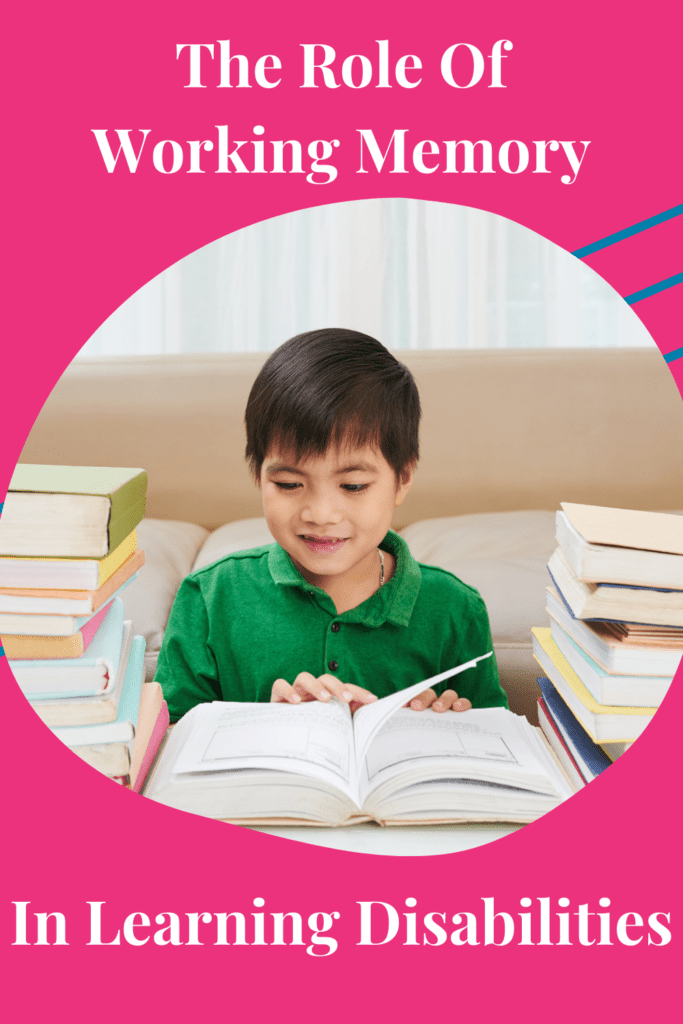When I explained working memory to a ten-year-old last week, he said, “I get it. It’s called working memory because it’s the memory you need to do your work.” He said he now understood why he wasn’t very good at ‘working’ in class.
When working memory is weak your child can appear careless, unfocused, lazy and even defiant. As frustrating as this can be for parents, it is even more so for kids who are trying their hardest but appear like they are not even making the effort. Despite your child’s efforts they can’t seem to do anything right. A weak working memory influences countless areas related to learning and can even lead to an LD diagnosis. Up to 70% of students with learning disabilities in reading score very low on working memory.
Working memory is an executive function which I described in a previous article as the brain’s CEO. It is used constantly throughout the day to solve problems, perform tasks, hold conversations, comprehend and to learn new concepts . Difficulty remembering a series of instructions, recalling the sequence of events or items and poor concentration are all possible indicators of a weak working memory. Like the trunk of your car, it’s temporary storage until you arrive home and decide where to put your parcels. Now imagine you have a car with the tiniest amount of trunk space, but you have a family of six and not enough space for everything. Some items will naturally have to be left behind.
Working memory is where information is stored temporarily while your child completes other cognitive tasks. It allows your child to remember the correct sequence of steps to solve a math equation as they also try to calculate the answer. If it is weak, they may forget the sentence they thought up for a story in Language class because now they also have to think about which word-of-the-week to use in their sentence. This forgetting and having to go back and trying to remember and going back and then forgetting is a constant battle for the child with a weak working memory. No wonder so many of them hate school and eventually give up trying altogether. Simply thinking about their overwhelm makes me tired!
These kids may appear weak in math not because they have poor calculation skills but because they have difficulty remembering the correct sequence to solve the equation as they must store that information temporarily in order to calculate the answer. These kids are often described as being ‘absent-minded’ or disorganized–because on the outside it appears that way.
Many of the daily tasks that require your working memory do not need to be stored into your long term memory. Working memory is used to remember a phone number while you look for a pen, remember a brief shopping list that your partner calls out as you leave the house or to remember directions that you asked a clerk for at the gas station while you were in a foreign town. It is your working memory that allows you to remember those directions while you drive your car and possibly have brief conversations with other passengers in the car.
At school, your child may sit at his desk not doing the work the teacher just assigned because he can’t remember the series of steps or only a few of them. You likely see the same at home. When you ask your child to complete a series of chores before his friend comes over and only one or none are completed you might think he is being defiant or lazy never suspecting a weak working memory.
In daily life, these kids may have been asked to eat, wash their face and brush their teeth and instead they do the reverse. Simple tasks like setting the table or retelling an event that happened at school is a challenge and requires an exceedingly long time their speech may be slower so they can process or their words and sentences may at times become jumbled or they may often lose their train of thought. When a child is walking a tight rope between remembering what to do next while trying to focus on what they are doing now, low self-esteem and lack of motivation can occur. School and daily life can feel like a constant uphill battle.
Working memory is limited both in the amount of information it can store and for how long. A person with a good working memory can store approximately 6-7 items for 30 seconds without rehearsal before breakdown starts to occur. Information can be lost through distraction, information overload, stress or the passage of time. This temporary storage can last 15 minutes to 24 hours depending how meaningful the information. The number of items that can be stored is significantly less for the child with a weak working memory.
Parents often tell me that they can’t give anymore than two instructions at a time. While this is an excellent temporary strategy, learning to live with a weak working memory is no way to live at all. It’s like insisting that your family of six can make do with your car that has the tiny trunk. Upgrading to a car with a larger trunk can make life a whole lot less stressful and so can developing and improving a weak working memory.
In my next post, I will explain what steps you can take to improve your child’s working memory.
Want to learn more about how you can help your child succeed? Schedule a free 20 minute Star Student Breakthrough session!



One thought on “The Role of Working Memory in Learning Disabilities”